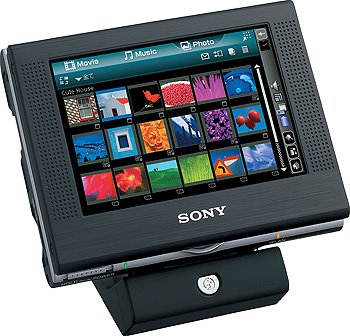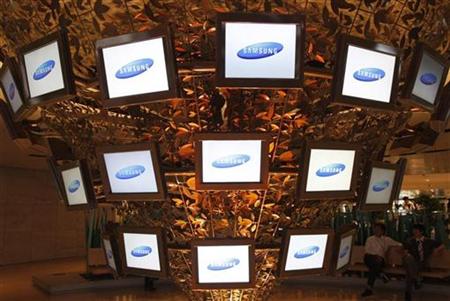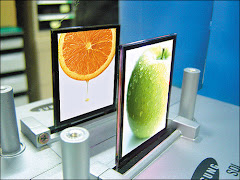THANKS FOR VISITING OUR BLOG! PLEASE CLICK HERE TO SEE OUR QUICKER LOADING BLOG THAT'S IN BETA STAGE!
ALSO WATCH FOR OUR CONTESTS FOR GREAT PRIZES COMING IN 2009!
OLED lighting technology is touted as the ‘next big thing’ for an industry in need of some major expansion with state of the art science.
It looks like OLED or organic light emitting diode and its meriad of uses is coming to a store near you and in a big way! The future of electronics is steamrolling into a new organic electronic age with the increasing development in organic displays and devices that incorporate these displays.
It is a state of the art technological advancement utilizing organic technology which is contributing to a major leap in our civilizations progression in harnessing biotech in a non-destructive way for our comfort and needs.
When compared to the current LCD and Plasma mechanisms, OLED promises to bring a host of additional advantages. Today the future of electronic display tech is looking much brighter, with a host of superior features such as bio friendly, super high contrast, ultra vibrant colours, wide viewing angle, razorthin organic display, ease and ultimately a lower cost of manufacturing compared to LCD and Plasma displays, lower energy consumption on small displays presently, no harmful radiation, space saving, flexible where required, lightweight and much more.
How Does OLED Work ?
The concept behind an OLED is very simple in their basic design. OLED's are similar to electroluminescent lighting, where a sheet or material is excited so it then emits the light. OLED light sources are a thin flexible sheet that is made of 3 layers. The layer of emissive electroluminescence is punctuated by organic compounds. The polymer or sublimed molecular film is sandwiched between two electrodes, one is transparent.
Material present on this organic luminescence diode allows the deposition of organic compounds onto the polymer substrate when the current passes thru them. Standard inkjet printers can be used to lay the material onto the substrate which means a huge potential for mass manufacturing at lower costs than LCD.
It is essentially a matrix of organic compounds arranged in pixelated form. The layers then emit varied colours of light when electricity passes through each layer. The electrons then are pushed through the layer depending upon which light gets emitted. Most commonly used in TV displays as well as smart phones the OLED promises to make lighting easy on the eye for daily use while providing superior image quality and effects within varied industry's. Applications are used within smartphones, pmp's, pvp's, mp players, small tv displays, monitors, lights, etc ( until Samsung's 2008 CES premiere of their 31 inch and 40 inch OLED TV ) for example.
High Light Output -
One of the tremendous advantages of OLED is the ability to emit intense amounts of light without hurting readability even under direct sunlight. While it was earlier generally perceived that of all the combined electrons called "excitons" could only emit 25% of light however with modern research and the advent of developing new technology's it has allowed for 100% of these excitons to convert into visible light. This makes OLED technology provide a much higher light output with many added advantages compared to traditional lighting in use today.
This is one main reason why this lighting technology is being used for ultrathin oled displays which are as thin as 3mm-4.3mm but are highly effective for light and display applications. For the newer slick variety of smartphones such as the models from Motorola, Nokia and Samsung, the superthin OLED displays are now being exploited within their product lines to their maximum advantage looking toward an increasing and continual growth pattern within many manufacturer's product arsenals.
At the present state of development since OLED's tend to consume a significant use of power and create high heat a lower life of the light source as compared to other lighting technology like LCDs, this technology is preferred for mobile phones until such time allows for better tech designed for other products to work efficiently. The enegry efficiency is very high compared to LCD for example however the total life hours for AMOLED at present is around 35,000 hours compared to LCD at 50,000 hours. This will of course increase once developers find the proper way to increase the organic displays life expectancy.
The Future Is OLED Bright -
Today most cell phones do not have ultrathin oled displays, however as of late Samsung is planning to launch OLED technology via its brand new QVGA resolution AMOLED display. This is seen as a breakthrough in mobile phone technology
Oled TV technology is still fairly new however companies such as Sony, Samsung, Hitachi, Matsushita, are already paving the way and with Sony's recent introduction of their late 2007 release of the Sony XEL-1 11" TV, the electronics industry is on the verge of a new era in organics.
Samsung's latest news of their upcoming premiere of their 40" proto-type OLED TV at the Las Vegas Electronics show CES, is upcoming January 2008. It also looks like they will be releasing a 31" OLED TV for retail sales sometime in 2008 within North America which will be a huge step for OLED.
As of this writing Toshiba has however delayed their debut OLED TV until in 2009 siting issues regarding higher than required power consumption necessary for optimum operating efficiency on larger displays but within the next year they may be up to speed on that issue.
copyright 2007-2008- oledomains - all rights reserved


































































































No comments:
Post a Comment